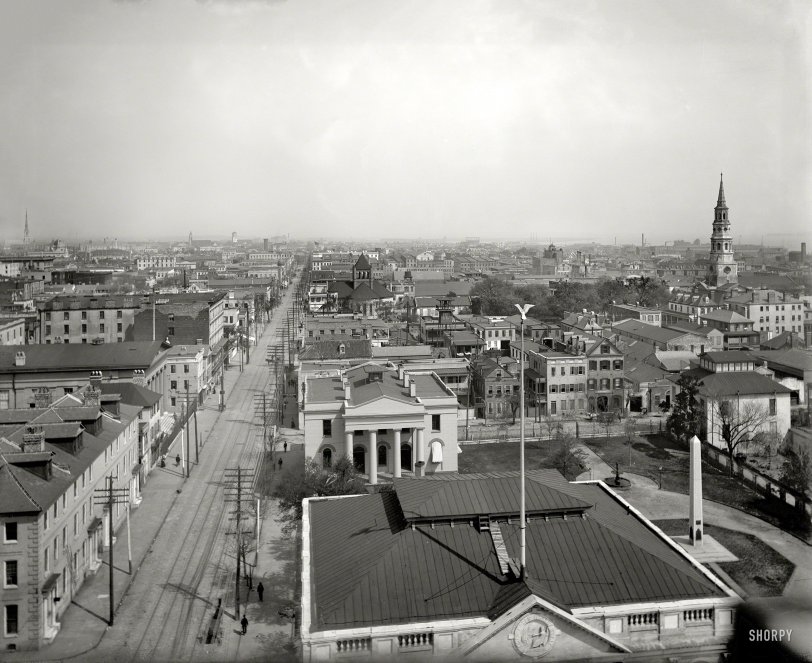


Framed or unframed, desk size to sofa size, printed by us in Arizona and Alabama since 2007. Explore now.
Shorpy is funded by you. Patreon contributors get an ad-free experience.
Learn more.

- Details, Details
- What's that building to the left of the tower?
- Coal Barges
- Bromo-Seltzer
- Inner harbor
- The Basin
- What a headache!
- Giant stepladder?
- Baldwin 62303
- Baldwin VO-1000
- Cold
- No expense spared
- Tough Guys
- Lost in Toyland
- And without gloves
- If I were a blindfolded time traveler
- Smoke Consumer Also Cooks
- Oh that stove!
- Possibly still there?
- What?!?
- $100 Reward
- Freeze Frame
- Texas Flyer wanted
- Just a Year Too Soon
- WWII -- Replacing men with women at the railroad crossing.
- Yes, Icing
- You kids drive me nuts!
- NOT An Easy Job
- I wonder
- Just add window boxes
Print Emporium
Charleston: 1900

Circa 1900. "Charleston, S.C., from St. Michael's Church." St. Philip's Church at right. 8x10 inch glass negative, Detroit Publishing Company. View full size.
The Birthplace of My Sanders Family
My great great grandfather was raised by a white family after both his parents died, I think they were the slave owning family of his mother, but they seem to be good people. They lived on Society Street. As he got older he became their butler, then they supported him in his own food-selling business, working from home. Then he soon went into the wood-selling business, he became self-employed probably around 1919. He maintained a good relationship with them during his life.
My great great grandmother and her sister were the daughter of a former female slave and a white plantation owner. Their mother raised them Catholic, they went to St Peter's Church and School. They lived at 38 (later 68) Mazyck St.
My great grandmother was 3 years old in 1900, she and her siblings grew up Catholic, my great-great grandfather was baptized in the Catholic Church right before marrying my great great grandmother. My great grandmother and her siblings attended St Peter's School then Immaculate Conception, where my grandfather and his siblings attended.
This is a nice glimpse of Charleston at that time, great to see what my ancestors saw when they were living there. The streets they lived on were Vanderhorst, St Philip, Warren, Ashton, and Congress before settling at 14 Addison (now demolished due to the I-26 construction).
Hiding the hydrants
When the Mel Gibson movie The Patriot was filming in historic downtown Charleston some years ago, the city would not let the film crews remove fire hydrants even though the hydrants scarcely fit in with the movie's American Revolution time frame. It turned out that there was another solution: in the Charleston scenes, ladies in hoop skirts can be seen standing around in the background.
The Fireproof Building
Front and center in this photograph is the famous "Fireproof Building" designed by Robert Mills, architect of the Washington Monument, the US Treasury Building, and many others. With its four columned pedimented temple front, it sits right behind the roof of the Charleston City Hall, seen here in the foreground. Mills's design was built between 1821 and 1827 as the County Records Office. He employed virtually no wooden elements at all, hence the ambitious nickname. Even the window frames are of iron.
Hasn't changed very much.
Judging by this Bird's Eye view from Bing: http://binged.it/12RUvpW
Looks like a nice place to visit!
























On Shorpy:
Today’s Top 5